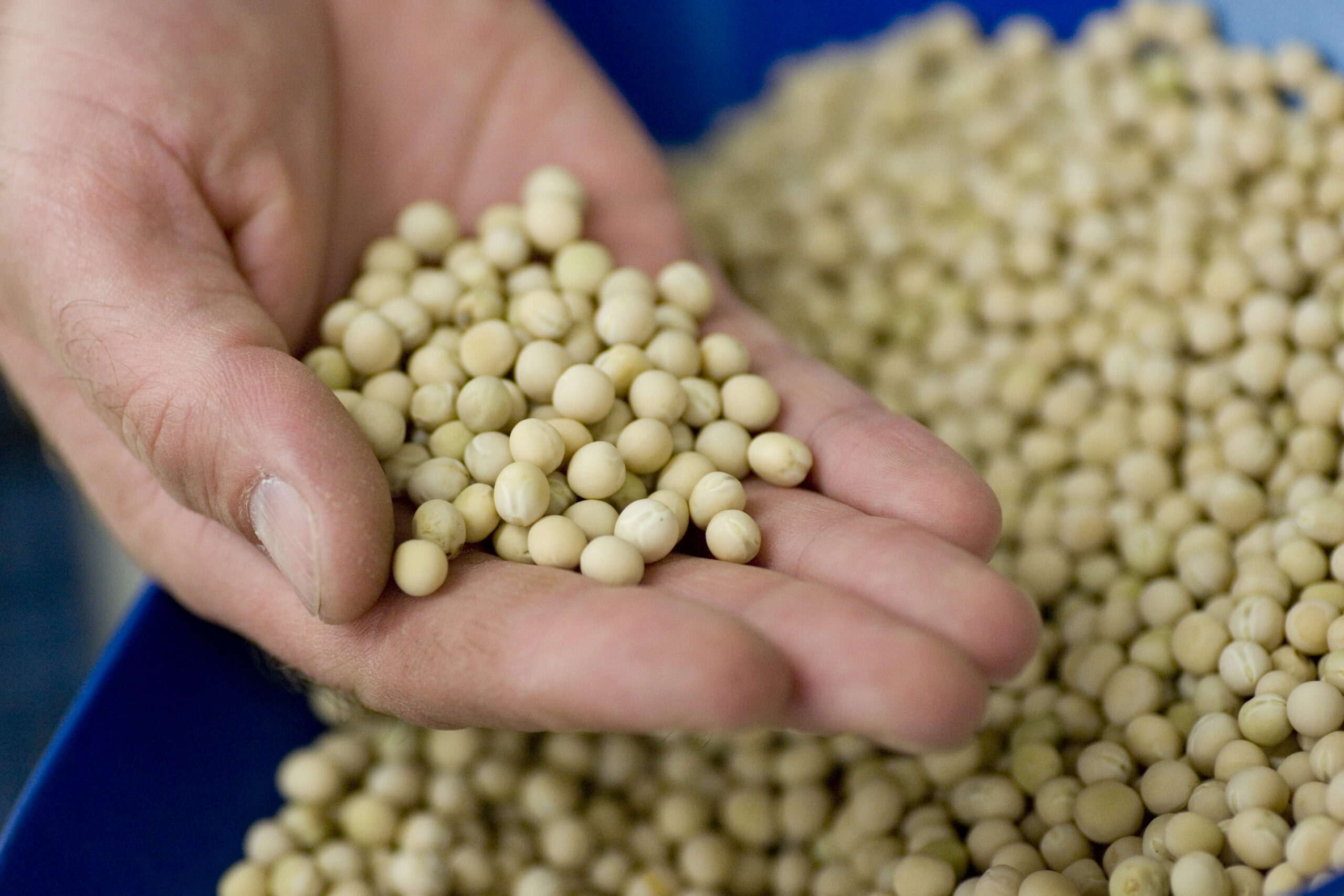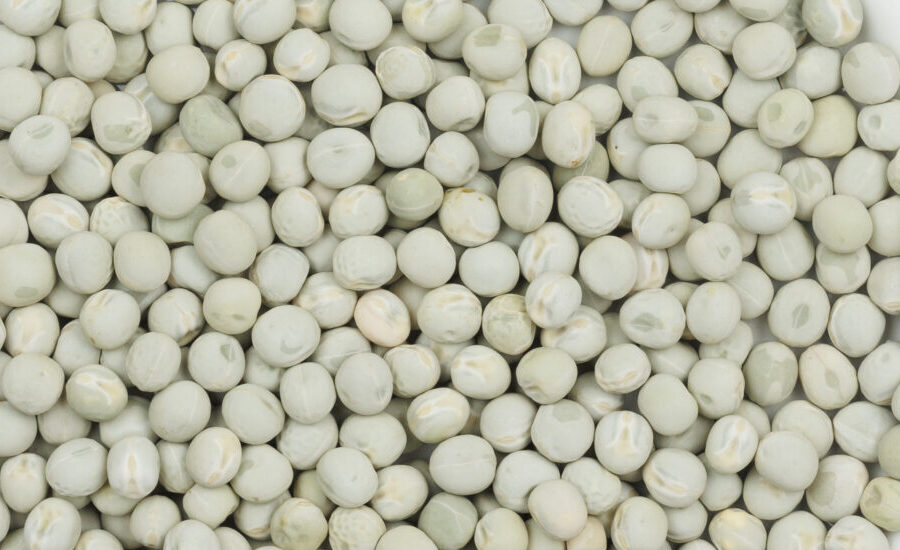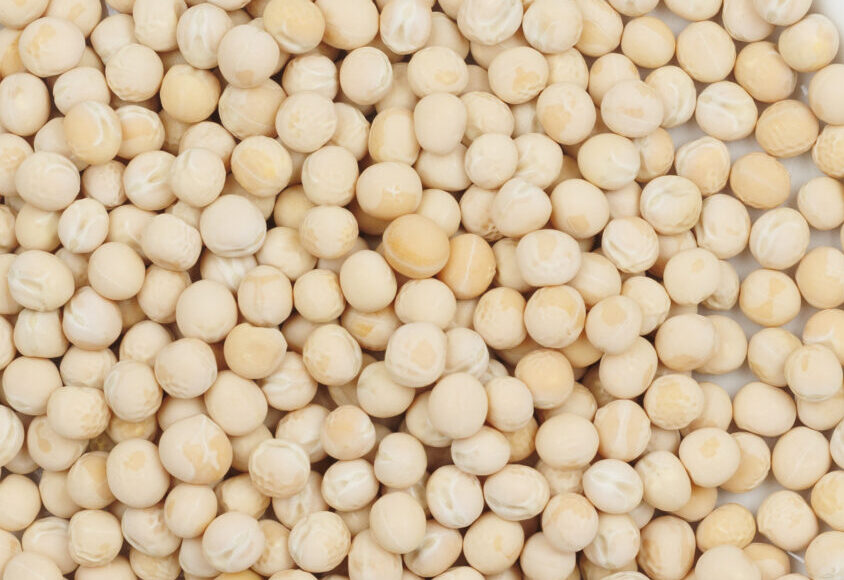Market Class: Yellow Pea
Year Released to Seed Growers: 2015
Sub-licensed Outside of SK: SeedNet
International Distribution Rights: Canterra Seeds Ltd./Meridian Seeds
Breeder: Dr. Tom Warkentin, Crop Development Centre, University of Saskatchewan, Saskatoon, SK
Plant Breeders Rights: PBR ’91

Description
In 12 years of testing in the Co-op and Regional trials in Saskatchewan (Table 1), CDC Inca yielded 104% compared to CDC Amarillo in the southern regions and 102% in the north. CDC Inca has PBR’91 protection.
Strengths
- Good yield, particularly in the south
- Good resistance to seed coat breakage
- Powdery mildew resistance
Neutral
- Medium vine length
- Medium seed size
- Round seed shape
- Medium maturity
- Moderate cooking time
- Fair resistance to Mycosphaerella blight and Fusarium root rot
Weaknesses
- Lower protein (-0.6%) compared to CDC Amarillo
- Rated fair for greenness
Table 1: Agronomic performance of yellow pea varieties from Co-op and Regional Trials in Saskatchewan
| Variety | Year Registered | Years Tested | Yield (% Amarillo) | Relative Maturity | Lodging (1-9)2 | Vine Length (cm) | Resistance to: | Seed Weight (g/1000) | Protein % vs. CDC Amarillo | ||||||
| Area 1, 2 & South 31 | Area North 3 & 41 | Mycosphaerella Blight3 | Powdery Mildew | Fusarium Root Rot | Seed coat breakage | Seed coat dimpling4 | Greeness5 | ||||||||
| CDC Amarillo | 2012 | 14 | 100 | 100 | M | 3.5 | 85 | 4.5 | R | MR | F | F | G | 230 | 23 |
| AAC Aberdeen | 2019 | 5 | 108 | 107 | M | 3.5 | 85 | 4.5 | R | I | F | F | G | 250 | -1.1 |
| AAC Beyond | 2021 | 5 | 106 | 108 | E | 4.5 | 80 | 5 | R | MR | F | F | G | 220 | 0.3 |
| Boost | 2022 | 4 | 102 | 101 | M | 4.5 | 90 | 4.5 | R | MR | G | G | G | 230 | 1.2 |
| CDC Boundless | 2023 | 4 | 109 | 105 | M | 3 | 90 | 4.5 | R | MR | G | G | G | 230 | 0.8 |
| CDC Canary | 2017 | 10 | 99 | 100 | E | 3.5 | 85 | 4.5 | R | I | G | F | F | 230 | 0.1 |
| Caphorn | 2023 | 4 | 100 | 98 | M | 4 | 80 | 5 | R | MR | F | G | G | 260 | 1.7 |
| AAC Carver | 2014 | 7 | 102 | 100 | E | 4 | 85 | 5 | R | I | G | F | G | 240 | -1.3 |
| AAC Chrome | 2017 | 7 | 106 | 104 | M | 4.5 | 75 | 4.5 | R | I | G | G | G | 240 | -1 |
| CDC Citrine | 2022 | 6 | 108 | 110 | M | 4 | 85 | 4 | R | MR | G | G | G | 220 | 0.3 |
| CDC Engage | 2023 | 4 | 107 | 107 | M | 3.5 | 85 | 4.5 | R | I | G | G | G | 240 | 0.7 |
| CDC Hickie | 2021 | 7 | 107 | 106 | M | 3.5 | 85 | 4.5 | R | MR | G | G | G | 230 | 0.5 |
| CDC Inca | 2015 | 12 | 104 | 102 | M | 4 | 85 | 4.5 | R | I | G | G | F | 230 | -0.6 |
| AAC Julius | 2021 | 5 | 110 | 105 | E | 4 | 85 | 4.5 | R | MR | G | G | G | 210 | 0.4 |
| CDC Lewochko | 2018 | 10 | 104 | 104 | M | 3.5 | 90 | 4.5 | R | I | G | G | G | 230 | 0.9 |
| AAC McMurphy | 2023 | 3 | 102 | 101 | M | 3.5 | 85 | 4.5 | R | MR | F | F | G | 250 | 0.6 |
| CDC Meadow | 2006 | 12 | 93 | 90 | E | 4 | 85 | 5 | R | I | G | G | G | 220 | -0.5 |
| AAC Planet | 2022 | 3 | 107 | 102 | M | 3.5 | 90 | 4.5 | R | MR | G | G | G | 220 | 1.2 |
| AAC Profit | 2019 | 6 | 103 | 109 | M | 4.5 | 90 | 4.5 | R | I | F | G | G | 230 | 0.8 |
| CDC Spectrum | 2016 | 12 | 105 | 103 | M | 3.5 | 85 | 4.5 | R | I | G | G | F | 240 | 0.7 |
| CDC Tollefson | 2021 | 7 | 109 | 108 | M | 3 | 90 | 4 | R | MR | G | G | G | 240 | -0.3 |
| CDC 5791 | 2024 | 4 | 107 | 103 | M | 4 | 90 | 4.5 | R | MR | G | G | G | 250 | 0.6 |
| CDC 5845 | 2024 | 4 | 108 | 107 | M | 3.5 | 90 | 4 | R | MR | G | G | G | 240 | 0.6 |
Source: Varieties of Grain Crops (SaskSeed Guide)
1Area 1: Brown soil zone; Area 2: Dark brown; Area 3: Black; Area 4: Dark grey
2Lodging score: 1 = Upright; 9 = Completely lodged
3Mycosphaerella blight score: 1 = No disease, 9 = Completely blighted
4Seed coat dimpling: Very Good = 0-5%; Good = 6-20%; Fair = 21-50%
5Greenness: Good = 0-15%; Fair = 16-40%
Statistical analysis of 8 years of long-term RVT data ranked CDC Inca 9th from the top for yield among 16 historical and new yellow pea varieties in the south and 12th in the north. CDC Inca consistently yielded significantly higher than CDC Meadow and would be a good replacement for this older variety.
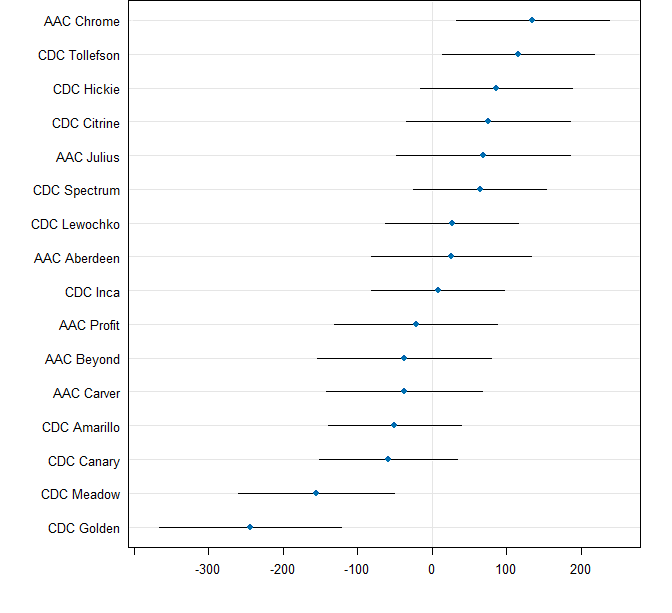
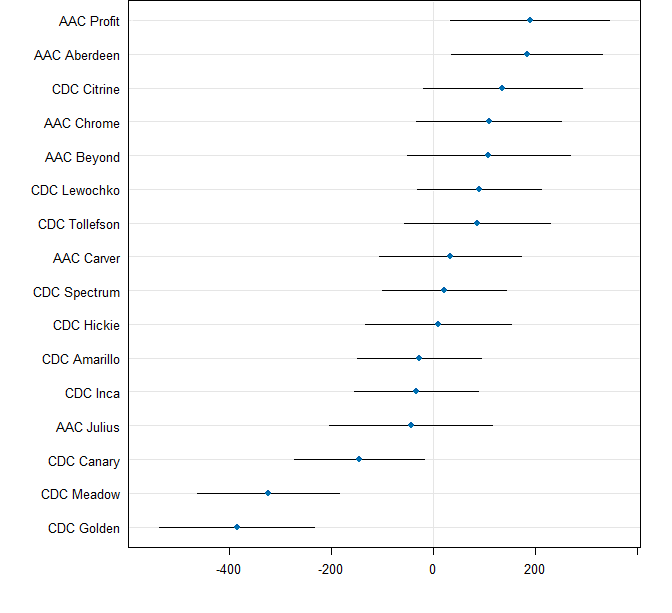
Figure 1. Relative yield ranking of yellow pea varieties from 8 years of RVT data in SK in the south (left) and north (right).


